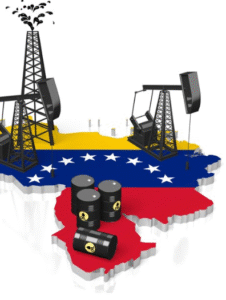$XOM $CHK $UNL
#NaturalGas #EnergyPolicy #USProduction #TrumpAdministration #OilAndGas #FossilFuels #EnergyMarket #EnergyExports #USEconomy #MarketTrends #GasPrices #EnergyBoom
President Trump’s “drill, baby, drill” approach promises to reinvigorate the U.S. oil and gas sector through reduced regulatory burdens and enhanced access to lucrative export markets. By lowering barriers, the administration aims to make it easier for companies to tap into America’s abundant energy reserves and expand their footprint in global markets. However, even with a friendlier policy environment, producers are grappling with persistent challenges such as low domestic natural gas prices, excessive output levels, and sluggish demand growth. Last year, natural gas production slowed its momentum, weighed down by multi-year price lows triggered in part by milder-than-expected weather and an oversupply in storage. While higher exports and increasing consumption could fuel optimism, natural gas prices must stabilize or rise to incentivize significant investment in new drilling activity. Without favorable market forces, the industry’s growth prospects could remain modest despite policy support.
A key factor in achieving a natural gas boom will be bolstering exports to international markets, particularly in Europe and Asia, where demand remains robust. U.S. liquefied natural gas (LNG) exports have surged in recent years, driven by geopolitical alignment and aggressive pricing strategies. The administration’s efforts to negotiate more favorable trade partnerships could further enable American producers to gain a stronger hold in these regions. For example, as Europe reduces its reliance on Russian gas, U.S. exporters might seize the opportunity to supply LNG at competitive rates. Additionally, rising industrial and power-sector demand for cleaner energy alternatives across Asia presents another natural avenue for expansion. However, growth in these markets hinges on the global pricing environment. If international prices remain depressed due to oversupply or competition from other regions, U.S. producers could struggle to remain competitive despite policy interventions.
Domestically, warmer weather remains a recurring challenge for the natural gas industry, as it constrains residential and commercial heating demand. This, coupled with higher-than-average storage inventories, is applying downward pressure on prices. At current price levels, many smaller producers are finding it difficult to sustain economic drilling. Larger energy companies, such as $XOM and $CHK, with diversified portfolios and lower-cost operations, may be better positioned to weather the downturn and capitalize once demand trends realign. To ignite the next drilling boom, natural gas prices will need to rebound above $3 per million British thermal units (MMBtu)—a level not easily achievable unless inventory levels fall significantly or demand spikes unexpectedly due to weather anomalies or industrial uptake. Analysts remain cautiously optimistic that emerging technologies and cost-cutting measures could offset some headwinds, but the recovery timeline remains uncertain.
On the retail side, lower natural gas prices have been a boon for U.S. consumers and industries reliant on affordable energy. From utilities reducing costs to households to manufacturing facilities operating more efficiently, the knock-on economic benefits are significant. Nevertheless, policymakers will need to strike a fine balance. Aggressively pushing for export growth might lead to tighter domestic supplies, which in turn could lift prices and squeeze consumers. A more measured approach, emphasizing sustainable domestic production while fostering targeted international growth, might yield longer-term gains for both producers and American citizens. Market participants will closely monitor developments from Washington, as well as broader trends in supply, demand, and global LNG trade, over the coming quarters to determine whether this promised boom is feasible—or simply rhetoric.











Comments are closed.